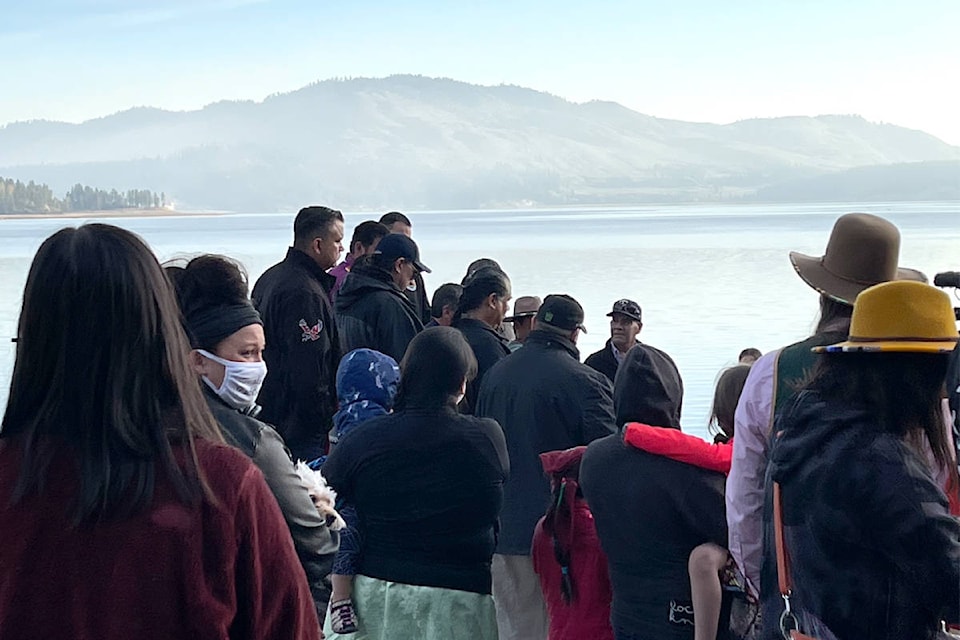By Eileen Delehanty Pearkes
The Supreme Court of Canada’s April 23 decision, confirming the Aboriginal rights of the Sinixt people, rang through my heart like a liberty bell. For more than two decades, I have been hoping for this moment of truth.
In 1998, a few years after relocating to the upper Columbia region (also widely referred to as the West Kootenay), I asked a simple question that didn’t seem to have an answer. Who lived in these mountain valleys before colonial contact? The story of the Sinixt lay dormant beneath the surface of all the reservoirs, towns, cities and roads. The question sent me on a voyage of discovery that has enriched my understanding of this powerful landscape beyond expectation.
Then, I had no Google browser bar, no email, no internet access. But I did have curiosity, and that served me well. I located a library of government documents, based in Victoria. I called the number, from a landline.
A few weeks later, I read a dusty, 1985 government report that introduced me to a Sinixt man named Charlie Quintasket, who knew his tribe’s history. The report detailed it well. The day I finished reading and stepped from my writing studio, I looked up at Elephant Mountain. Everything looks different now, I said to myself.
With the colonial endorsement of Canada’s highest court, we can all look around and say everything looks different now. The benefits of welcoming the Sinixt home are many. While some settlers may focus their responses on wanting Indigenous people to pay taxes ‘like the rest of us,’ and others may feel a completely unfounded threat about private land being taken away, I see a different outcome.
My view of the future of this region has been informed by 23 years of research, thought, travel across these mountain ranges and rich conversation across boundaries. In that process, I have befriended many Sinixt people, most of whom have had no choice but to reside south of the border. No choice. As an American myself, and a permanent resident of Canada, I have been more able to access and enjoy the traditional territory of Sinixt people than they have.
Not a single Sinixt person has ever demonstrated resentment to me. Instead, they have diligently and tirelessly worked, over more than 30 years, on language restoration, on legal battles to confirm their rights, on salmon restoration to the upper Columbia rivers, on healing cultural losses.
Over the years, I have often asked myself if – were I in a similar circumstance of being denied my identity, my homeland — I could be as gracious, as patient, as focused on truth? I don’t think so.
I have learned so much in writing about and working with the Sinixt people, in coming to know them as individuals and as a tribe: Patience, persistence, generosity and the power of laughter. How to wake up my heart; love the forests, water and wild creatures with empathy. How to dig medicinal roots with respect. Weave bark into baskets. Sing praise to water. Stand with dignity and respect. The Sinixt have been powerful teachers.
Today, more than anything, I am grateful. Grateful for the persistence of the Sinixt. Grateful for the opportunity that Canada’s highest court has given all of us who live here. Grateful for a path forward to restore the land to beauty and health — for many, many generations to come. Grateful for the chance to walk more softly and compassionately, to restore rights to the Columbia River, to invite salmon to return, to build a common future.
In the words of Sinixt leader D.R. Michel: For the benefit of all.
Eileen Delehanty Pearkes is the author of The Geography of Memory: Recovering Stories of a Landscape’s First People. A new, expanded edition will be released by Rocky Mountain Books in early 2022.
READ MORE: ‘It’s for my family, for future generations’: Sinixt win historic decision at Supreme Court of Canada
